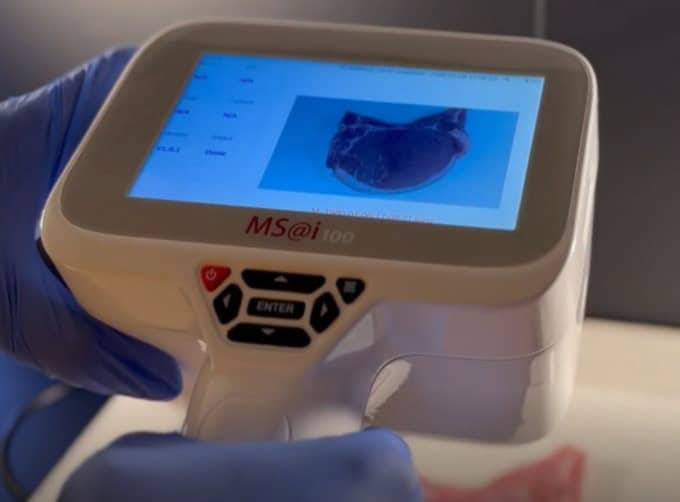
Born and raised in China, Dr. Li (Laura) Liu obtained her PhD in Computer Science and Engineering from Hong Kong Polytechnic University. Interestingly, though her career has largely been spent researching food science with McGill’s Dr. Michael Ngadi, her academic focus was on biometric recognition. The relevance becomes apparent when one learns what her work entails. As Chief Technical Officer of Montreal-based MatrixSpec Solutions, she leads two CAAIN-supported hyperspectral imaging research projects, one of which is titled Development of Automated Smart Device for Pork Marbling Assessment.
“I’ll be honest,” she laughs. “At first the idea of working in agriculture didn’t really interest me. But I was intrigued by the potential of hyperspectral imaging, and accepted an offer to interview with Dr. Ngadi. I came away convinced he’d be a good mentor, so I took a leap of faith. It was the right decision. I love my work and have learned so much from him and our other colleagues. I can’t imagine doing anything else because our research is exciting and has such tremendous upside.”
Marbling in red meat is so named because the streaks of fat resemble a marble pattern, adding flavour, which makes it one of the main criteria for judging meat quality. Typically, the more marbling, the better the cut. Canada Pork International, the export promotion agency of our nation’s pork industry, tasked an expert panel, which included Dr. Liu, with creating a quality-based classification system that captures the importance of marbling in determining meat grade. Unfortunately, assessments based on those guidelines rely on visual inspection, which requires the sample to be cut, a potentially inconsistent process that can devalue the product. In an effort to standardise pork grading, MatrixSpec has developed, and validated in research-scale testing, an automated loin chop marbling assessment tool.
“When I came to Canada in 2008, it was to get things started on this project. It’s taken 15 years of hard work, but we are now ready to upgrade our imaging technology to a handheld prototype appropriate for industrial use, and capable of assessing the quality of either a chop or an entire loin from the outer surface without any cutting,” Laura explains. “We will test and validate the system in a pork processing plant. We are also going to deploy big data analytics on a pork quality evaluation database to investigate factors influencing marbling, including management practices and breed. This will allow us to build an intelligent platform capable of predicting marbling based on appropriate management information. Our device will be used to verify those findings.”
The portable Marbling Meter “gun”—picture the kind of handheld scanner used at a retail checkout counter—will apply artificial intelligence, image processing, and pattern recognition to automate marbling assessment in varying sizes and scales of pork processing plants. The end result will be improved Canadian pork industry operational efficiency, productivity, competitiveness, and profitability. Furthermore, by adopting these technological innovations, primary processors will have the opportunity to create new and better positions, allowing employers to re-train some of their top staff, and attract and retain highly skilled workers.
CAAIN funding has played a critical role in the development of a viable product. “We will soon have a portable Marbling Meter prototype. That will allow us eventually to commercialize an industrial grade, programmable handheld device capable of non-destructive evaluation of both loins and chops,” Laura notes. “That’s important, because any inspector, regardless of physical stature, will be able to operate the device and apply settings capable of delivering consistent, reliable results based on either Canadian or US standards. CAAIN’s support allowed us to work with an excellent contractor to engineer a “gun” equipped with the technological advances we researched and developed. Without the funding, commercialization would still be a long way off. Instead, we are close to having a viable commercial product that will greatly improve the pork sector. And once we are up and running, we will look at adapting our technology for beef, significantly expanding our potential market.”
An industry-wide challenge addressed by made-in-Canada agri-food technology. Exactly what CAAIN was created to facilitate.
CAAIN Contribution
$301,428
Total Project Value
$844,081
Project Contact
Dr. Laura Liu
Chief Technology Officer
MatrixSpec Solutions Inc.
info@matrixspec.ai
514.457.4000